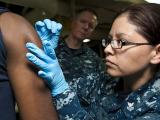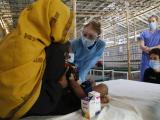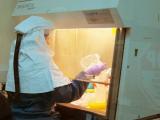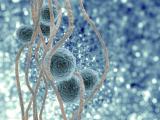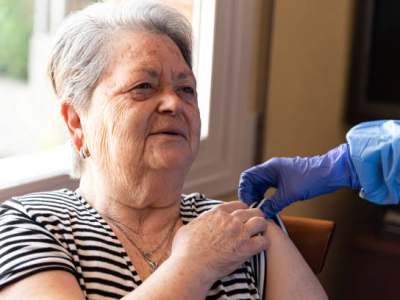Apr 16, 2003 (CIDRAP News) The genetic blueprint of Coxiella burnetii, a category B bioterrorism agent that causes Q fever, has been decoded and analyzed, the National Institute of Allergy and Infectious Diseases (NIAID) announced this week.
Q fever is a debilitating and highly infectious flu-like disease that afflicted thousands of soldiers in World War II, NIAID said in its announcement. "C. burnetii is of concern as a potential bioterrorist threat because early diagnosis of the disease is difficult, and the microbe is a hardy organism that can be aerosolized," the agency said.
A report on the sequencing project will be published online this week in The Proceedings of the National Academy of Sciences and will appear in the journal's Apr 29 print edition, NIAID said.
"This genome sequence offers a treasure trove of information that will allow scientists to develop a much higher-resolution picture of Coxiella's biology and its ability to cause disease," said John Heidelberg, PhD, who supervised the sequencing project at the Institute of Genomic Research in Rockville, MD. Heidelberg and Rekha Seshadri, PhD, collaborated with researchers from several other labs. NIAID and the Defense Advanced Research Projects Agency supported the research.
C burnetii is hard to manipulate genetically because it replicates only inside mammalian cells, NIAID said. It lives primarily inside human macrophages, which are known as indiscriminate microbe eaters. The microbe is unusual because "it has an uncanny ability to survive in the environment and resist being degraded by macrophages," the announcement said.
Robert A. Heinzen, PhD, of NIAID's Rocky Mountain Laboratories in Hamilton, Mont., said the genetic blueprint will allow investigators to study genes involved in the organism's pathogenicity and should reveal targets for improved diagnostic tests and possible vaccine candidates. The analysis identified genes that appear to be involved in the microbe's virulence and interactions with its human or animal host, the NIAID statement said.
See also:
NIAID news release
http://www.niaid.nih.gov/news/newsreleases/2003/Pages/cburnetii.aspx

